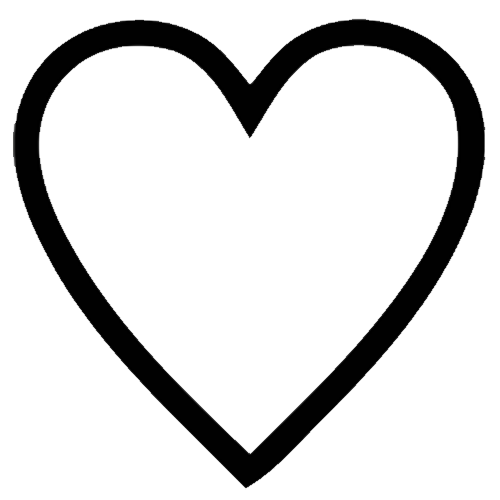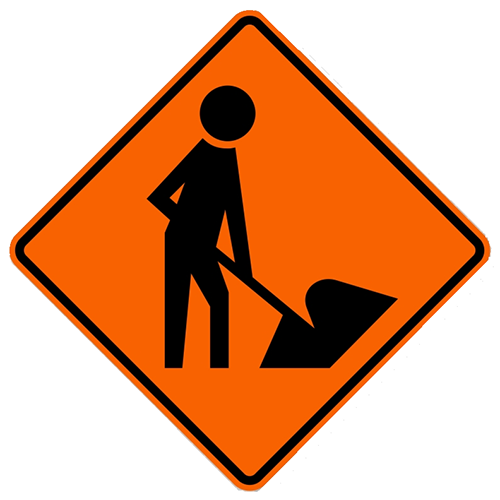Cognition
Week 64
Our brains allow us to use symbols that stand for real things
Cognitive skills, or cognitive abilities, are the ways that your brain remembers, reasons, holds attention, solves problems, thinks, reads, and learns. Logic and reasoning skills help you solve problems and generate ideas. This cognitive ability is part of the preciousness of our humanity. God has endowed us with the ability to think logically well beyond any animal. There is a huge gulf between our cognition and that of animals. Animals mostly live by instinct and inborn behaviors.
Point to emphasize
We see and understand the meaning of symbols in daily life.
Sample content and conversation with children
[Storyteller, depending on time and your group of children, you could choose 2-3 of the following suggested points.]
- We have been discovering how God made us so differently than the animals. Now we will discover that God made us with a marvelous brain that is so far above any animal’s brain.
- Today we will see that we can easily understand symbols!
- [Start with simple symbols that they know (this may be helpful for younger children).]
- [Show picture #1.] What does this look like? [Have children answer.] Yes, it’s an arrow!
- [Show picture #2.] Now how about this one? A star! It’s a symbol of a star.
- [Show picture #3.] What is this shape? Yes, it’s a heart! That’s not what our heart looks like but it’s a symbol of a heart.
- [Next, show the children some traffic lights one at a time and ask them if they know what each one is and what it means.]
- [Show picture #4.] What is this? [Have children answer.] Yes, it’s a red light. What do we do when we see a red light? That’s right, we need to stop. Red means stop.
- [Show picture #5.] How about this light? It’s green. Green means…? Go!
- [Show picture #6.] Now let’s take a look at this. What do you think this signal means? [Let children answer.] If people are at the street corner and see this sign, what does it mean? [Let them answer.] That means we can walk across the street.
- [Show picture #7.] What about this one? [Let children answer.] Yes, you’re right, red means stop. Stop means, don’t walk across the street.
- Now let’s all pretend to get into the car and take a drive together. First thing we do is to fasten our seat belt. Here we are driving along (everyone has a pretend steering wheel) and we see this sign.
- [Show picture #8. Stop sign] Can we keep driving when we see this sign? [Have children answer.] No! It’s a sign that tells us to stop! SO, put your foot on the brake. Even if you can’t read the word STOP, you know that it is a stop sign.
- Okay, we can start driving again. [Show picture #9.] What does this sign look like to you? [Let them answer.] Right, it looks like it’s saying a big NO to riding bikes there! So if we were on a bike we could not go down this way. But we are in a car so we can keep going.
- [Show picture #10. A sign with an arrow] Now which way do you think this sign is telling us to go? [Let them answer.] That is right! We are going to curve this way so turn your steering wheel the direction of the arrow. You all did great in our car. Let’s unbuckle and get out.
- Now let’s look at some signs we don’t often see:
- [Show picture #11. Railroad crossing] Can anyone guess what this is? [Have children answer] This is a railroad crossing.
- [Show picture #12. Road work with a person digging] Can anyone figure out what this is? [Let children answer.] The figure looks like it’s digging, so maybe there are people working on the road ahead of us.
- [Show picture 13. Person throwing trash] What does this one mean? [Let them answer.] Right, this symbol tells us to throw trash into the garbage can.
- [Show picture 14. Don’t feed animals] What does this symbol tell us? [Let them answer.] Yes, it means don’t feed the animals.
- Wow, you all can understand these symbols! Sometimes you don’t even need anyone to tell you what it means. You can tell just by looking at it. Do you think any animal can do this? [Let them answer.] NO!
- [Show picture #15. A guide dog walking with a blind person across the road.] Does anyone know what kind of animal this is? [Let them answer.] Yes, a dog, but it is a special kind of dog. This dog is trained to guide the blind.
- What is this dog doing? [Let them answer that the dog is helping the girl walk across the street.] Guide dogs help people who cannot see well or cannot see at all walk places and to cross the road. But do you think those dogs can read the symbols like you can? Do you think they know what the traffic lights mean? [Let them answer.] No, not at all. They don’t even see colors the same way we see them and those trained dogs don’t know what a STOP sign or a red light means.
- The dogs are trained to help the blind person not hit anything in their path, and they will block the person from stepping onto the road to let their owners know they have reached the end of the path. But they have to wait for their owner to tell them when it is safe to cross the road. The dogs can’t read the traffic signs and symbols because their brains weren’t made that way. Only people can.
- Our brains work in an amazing way! Even toddlers know some signs when they see them.
- God made you and God made me with brains that can use and understand these symbols. We were created wonderfully! Let’s all thank God together. Thank You God!
Songs
God, our God
God has made all things
Suggested activities
For Zoom meetings:
Play the game, “Red Light, Green Light”
When you say, ‘Green Light’ everyone will walk in place. When you say, ‘Red Light’ everyone must immediately stop. If players are still moving when you call, ‘Red Light’, they must sit down. (Use different motions, jumping jacks, tap your head, move your arms.)
For in-person meetings:
- Following the Signs Game
- What you will need: Paper, blue painter’s tape, rope, or anything you can use to make an obstacle course.
- What to do:
- Print out provided sign patterns and cut them out [click here for a PDF file with the signs] or make your own sign with the words: Stop: look both ways; Slow: 5 steps; Bump: jump 5 times; Arrows; Exit.
- Set up a path using the signs, tape, chairs, tables, etc.
- You can tape the signs on the walls, chairs, or use a milk jug or something similar to display the signs. You can tape the arrow signs to the floor to let the children know which way they should go.
- Tell your children to follow the path and do what is written on the signs. The first time through you can be the leader and tell the children what the sign says to do. When they come to the caution bump sign they should jump five times. When they come to the stop sign they should stop, look both ways and then start following the path again. When they come to the slow sign they should take five slow steps, and follow the direction of the arrows. Put the exit sign at the end of the path. Let the children follow the path until they get tired of the game.
- Roads and Traffic Signs Play
Set up roads on the floor with masking tape. Bring in small cars and trucks for the children to play with. Put up road signs at intersections. Demonstrate how the traffic signs are used.
Pictures
#1: Arrow
#2: Star
#3: Heart
#4: Red light
#5: Green light
#6: A pedestrian signal: walking figure
#7: A pedestrian signal: a red hand or a red standing figure
#8: Stop sign
#9: No bike riding sign
#10: Curve ahead sign
#11: Railroad crossing sign
#12: Men at work sign
#13: Trash bin sign
#14: Do not feed the animals sign
#15: A guide dog walking with a blind person across the road















